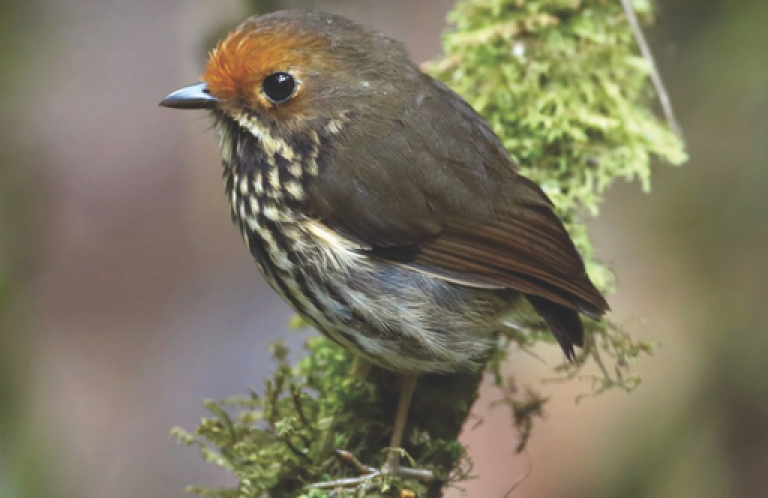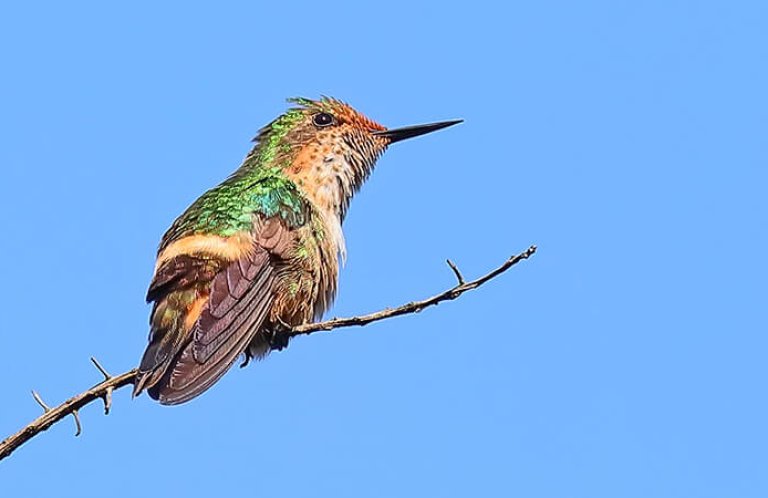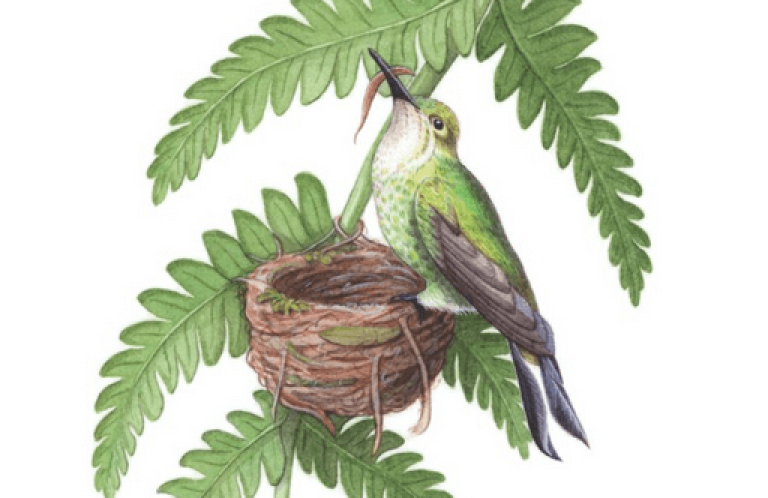Search On!: The Search for Lost Birds Racks Up Successes
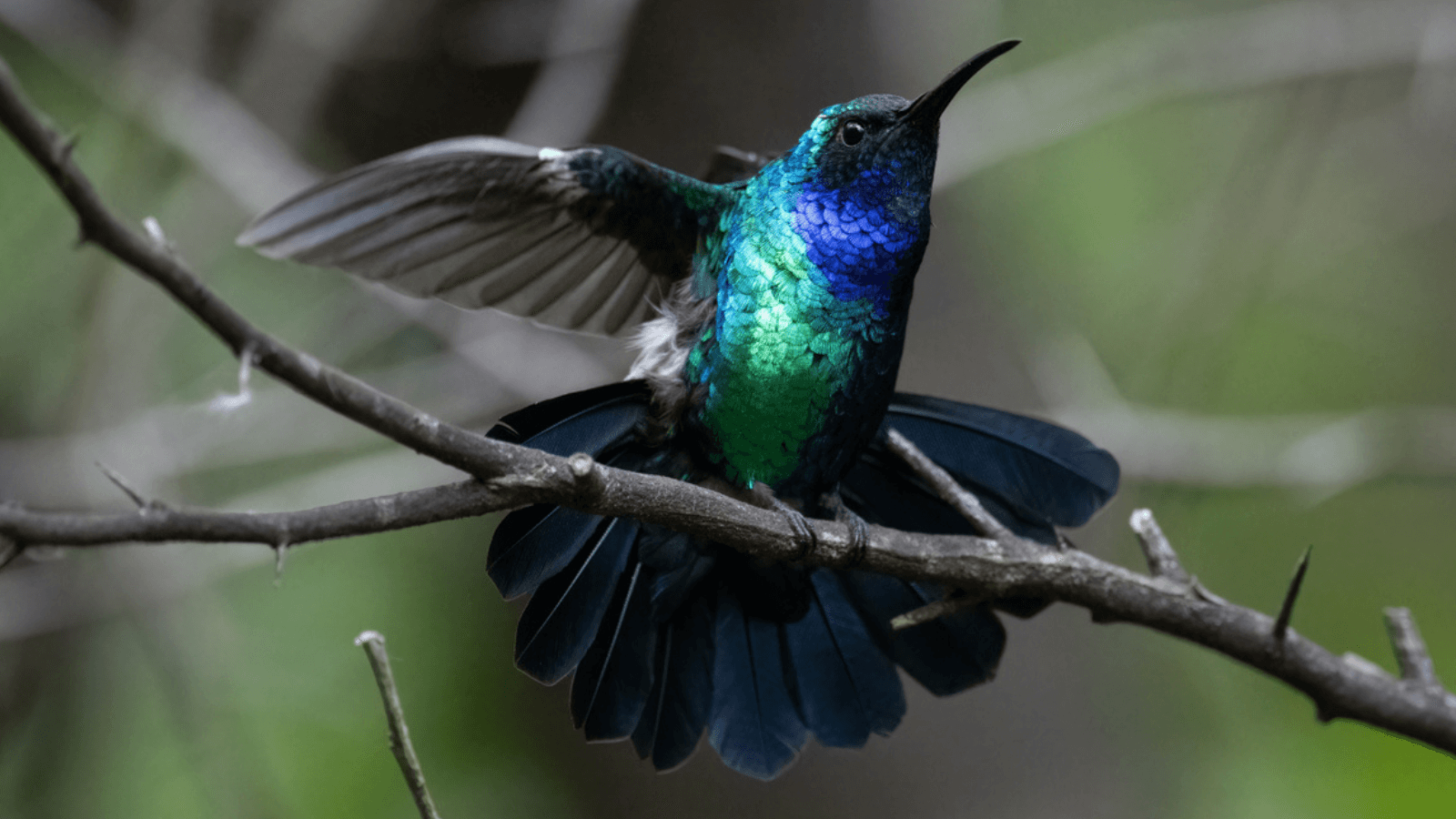
When John Mittermeier was 15 years old, he received the book Threatened Birds of the World, a large volume published in 2000 covering more than 1,200 species at risk of extinction. “I saw a distribution map for a bird in the South Pacific that was nothing but question marks, and that just completely captivated my imagination,” he says. “I have never looked back since.”
Indeed, he has not. Not only does Mittermeier hold a Master's in ornithology from Louisiana State University and a PhD in biodiversity conservation from the University of Oxford, but he also has observed more than 6,000 bird species in 120 countries. And he has co-authored more than 30 papers, articles, and other publications about birds and conservation.
Today, Mittermeier has followed the path that captured his imagination more than 20 years ago. As the Director of the Search for Lost Birds, a collaboration between ABC, Re:wild, and BirdLife International, he is laser-focused on Earth's most poorly known birds and the rarest of the rare. His position has enabled him and many colleagues to replace question marks on range maps by locating species that had eluded searchers for at least 10 years. And the most exciting aspect of the Search for Lost Birds is that it's just getting started.
A 25-Year Legacy
The Search for Lost Birds initiative was founded in 2021, but ABC first got involved in looking for lost species about 25 years ago. In the late 1990s, the colorful Yellow-eared Parrot of Colombia's High Andes was considered by many to be lost and possibly extinct. But in April 1999, a group of researchers sponsored by ABC and Fundación Loro Parque discovered a group of 81 of the spectacular birds.
The species relies on the wax palm for food and nest and roost sites, but the tree was becoming scarce due to its use in Palm Sunday celebrations as well as unsustainable logging. Soon, the organization Fundación ProAves was founded in part to protect the parrot, and it organized a campaign to save the wax palm. Now, after more than 20 years of conservation work, the parrot's population exceeds 2,600 individuals.
Similarly, in 2016, ABC and the William Belton Conservation Fund provided financial support to a conservation partnership between the Smithsonian Institution and several scientific organizations in Venezuela for its search for the Táchira Antpitta. The plump brown forest bird had been missing since ornithologists first described it in the mid-1950s.
The five-person search team located the antpitta in June 2016 at the same location it had been discovered decades earlier in a remote part of what is now El Tamá National Park in western Venezuela. The team took the first ever photos of a living Táchira Antpitta and made the first recordings of its sounds. The species, classified by the International Union for Conservation of Nature (IUCN) as Critically Endangered, is believed to number no more than 50 individuals.
After the success of these projects and the rediscoveries of other lost species, ABC looked for ways to formalize future searches. Soon, the Search for Lost Birds was established; its model was Re:wild's Search for Lost Species, an effort that has rediscovered 12 species of plants and animals around the world since 2017.
“We've applied Re:wild's clear criteria for what ‘lost' means to birds,” Mittermeier says. “It's 10 or more years with no independently verifiable documentation. The species are not declared extinct by the IUCN, and nobody's definitely photographed, sound-recorded, or collected genetic material of them in the past 10 years.”
Quick Successes
When the Search for Lost Birds was announced in December 2021, the partners created a top-10 list of lost bird species to target for searches. In just over two years, two of the 10 have been located: Colombia's Santa Marta Sabrewing and Madagascar's Dusky Tetraka, as well as one that wasn't on the list: the Black-naped Pheasant-Pigeon of Papua New Guinea.
The sabrewing is a large green-backed hummingbird found only in the Sierra Nevada de Santa Marta mountains of northern Colombia. Males have a stunning iridescent blue throat and breast, and females have grayish-white underparts.
The species was lost to science for 64 years before being photographed once in 2010, only to become lost again before its rediscovery in 2022. Yurgen Vega, an experienced local birdwatcher, was the first to spot the bird that July. “The moment when I first found the Santa Marta Sabrewing was very emotional, I really couldn't believe it,” he says. “The adrenaline, the thrill of that moment of rediscovery, it's hard to fully describe just how exciting it was.”

Seven months later, professors Carlos Esteban Lara and Andrés M. Cuervo of Universidad Nacional de Colombia independently found other individuals in additional locations within the same area. This prompted ABC and other collaborators to immediately begin monitoring and studying the extremely rare population.
The researchers have focused on the birds ever since, and in March, they published a preprint of a new study of their findings about the sabrewing's behaviors, habitat, and range. Esteban Botero-Delgadillo, lead author of the study and Director of Conservation Science with SELVA: Research for Conservation in the Neotropics, says the species appears to be “an example of microendemism, as it seems to be restricted to a limited area within the world's most important continental center of endemism. We are excited to have the opportunity to continue studying this bird because there are still huge knowledge gaps regarding its biology and distribution. Filling these gaps will help achieve our ultimate goal of finding long-lasting conservation solutions.”
Led by Professor Lara, the partners have worked closely with the Indigenous communities in the region since the sabrewing's rediscovery. That work will continue, including discussions with local communities about further research, conservation measures, and if and how to arrange access for birdwatchers. While ecotourism has been an effective tool for supporting conservation in parts of the Sierra Nevada de Santa Marta, it also has the potential to create challenges for endangered species and people living in the region if not managed carefully.
“It feels like we have cracked the code behind this amazing species and understand, for the first time, something about it and how it managed to disappear from science for most of the past hundred years,” Mittermeier says. “From a Lost Birds perspective, this is just about the most exciting result you can hope for.”
Looking for Conservation Outcomes
Searching for and documenting a long-lost bird is as exciting and fulfilling an accomplishment as any birder or ornithologist can make — and rediscoveries consistently generate news coverage, providing attention to the plight of the world's threatened wildlife. Gathering proof of life is just the first step of the work, however. Mittermeier explains that the Search for Lost Birds is able to lead or assist with research and conservation projects after a rediscovery, even if ABC wasn't involved from the start.
“We always want to support rapid follow-up projects for species of conservation need that were found by our partners,” he explains. “Equally important are situations where we might not have been involved in the searches. In a place where someone else happens to find the bird, they might not have the resources to turn that rediscovery into an immediate conservation follow-up. That's something we can help with.”
For example, a group of Indonesian ornithologists rediscovered the Black-browed Babbler in 2020 after a 170-year absence. Mittermeier and his colleagues supported “some rapid follow-up research” to help the Indonesian team learn more about the bird.
In other cases, when a lost bird is searched for but not found, the results still can be a success. In Colombia, for example, the Sinú Parakeet was last reported in 1949, and searches over the last 20 years have come up empty, suggesting that the species could be extinct. ABC supported a 2021 search led by Sociedad Ornitológica de Córdoba that didn't locate the parakeet but did tally 238 bird species, 22 of which had not previously been recorded in the department of Córdoba. The team also “found a site with breeding Crested Eagle, which is really rare, and they're now turning it into a land purchase project with ABC support,” Mittermeier says. “So Lost Birds was able to lead to an incredible conservation outcome despite not finding a lost bird.”
Enlisting Local Expertise

One of the most publicized recent rediscoveries was the September 2022 sighting of the Black-naped Pheasant-Pigeon, a ground-dwelling pigeon that inhabits rugged Fergusson Island in Papua New Guinea. Local hunters had spotted the bird, known locally as Auwo, over the years, but it had gone undocumented by scientists since 1882, when it was first described. A celebratory video of two search-team members, Doka Nason and Jordan Boersma, viewing a camera-trap photo of the species went viral, and many media outlets covered the story.
Boersma and Mittermeier point out that even though the ornithological community hadn't encountered the bird for 140 years, Indigenous New Guineans didn't think of it as “lost.” The expedition team, which included the Papua New Guinea National Museum, relied on Nason and other New Guineans during the month-long search.
Augustin Gregory, a hunter from a village on the western slope of Mt. Kilkerran, reported seeing and hearing the Auwo several times, and the searchers followed his advice for where to place cameras in a dense forest. One camera placed on a ridge at 3,200 feet near a river eventually captured the Black-naped Pheasant-Pigeon walking on the forest floor.
A Needle in a Haystack
In late 2022, the Search for Lost Birds teamed up with the Madagascar program of The Peregrine Fund on a search for the Dusky Tetraka, a songbird endemic to the African island that had been missing since 1999. Mittermeier worked with Lily-Arison René de Roland, the Madagascar Program Director, whom he calls “a phenomenal conservationist and field biologist and kind of a savant in terms of finding lost species.” In 2006, René de Roland rediscovered the Madagascar Pochard after it had been missing for 15 years. As a student in the 1990s, he was on Peregrine Fund teams that found the lost Madagascar Serpent-Eagle and Red Owl.

Two teams of biologists set out just before Christmas 2022 toward places they hoped to find the tetraka. René de Roland and Mittermeier's group went toward the site where the last tetraka had been documented more than 20 years earlier. The trip took 40 hours of driving on “terrible roads,” Mittermeier says. And after a half-day hike into the mountains, “we got to the spot and all the forest was burned and destroyed.”
The searchers spent 10 days “going up and down brutally steep mountains hoping to find this bird but not being sure whether it was there and not knowing what it sounded like. It's a cryptic understory bird. I remember thinking it felt like playing outfield in a baseball game in the pitch-black hoping that you're going to catch a fly ball when you can't see anything.”
The other team, led by Peregrine Fund biologists Armand Benjara and Yverlin Pruvot, struck paydirt first, capturing a single tetraka in a mist net on the Masoala Peninsula on December 22. Then, on January 1, 2023, the second-to-last day of the expedition, Mittermeier found a tetraka near Andapa, more than 100 miles north of the first sighting. “I was walking along a really loud, rushing river in the mountains, and I was exhausted after all this field work. I had seen virtually no birds the entire morning and was thinking, ‘we're probably not going to find this bird.' I started walking back and just in that moment, this little bird started scooting up from the understory by my feet. It was the Dusky Tetraka.”
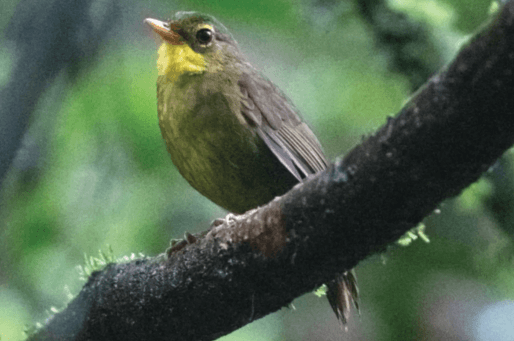
He would spot two tetrakas that day and the next. And the team set up a mist net, caught a bird, and took measurements and photos of it. The species has not been reported since then, despite extensive searches last September by Mittermeirer, René de Roland, Benjara, and other members of the Peregrine Fund team. Another search, by the Wildlife Conservation Society in early 2024, also came up empty. An additional concern for the species, says Mittermeier, is that forests in its home range are becoming rapidly degraded and the available habitat for the species may be disappearing.
Tallying Lost Birds
In addition to mounting expeditions for missing species and follow-up conservation projects, Mittermeirer and his colleagues at ABC, Re:wild, BirdLife, and the Cornell Lab of Ornithology recently conducted a study to determine how many bird species around the globe qualify as “lost.” The answer: 125 out of more than 11,000.
As the researchers explain in a forthcoming paper in the journal Frontiers in Ecology and the Environment, they used three online citizen science resources (the Cornell Lab's Macaulay Library, Xeno-canto, and iNaturalist) to narrow down which species have not been documented definitively in at least a decade. They report that the majority of lost birds occur in the tropics, and most inhabit tiny ranges, such as a small island or a mountainous area. Only four species are long-distance migrants. Oceania is home to the largest number of lost birds, followed by Africa, Asia, and South America. One-fourth of all avian families have at least one lost species, and the groups with the most lost species include pigeons and doves (seven) and Old World parrots, finches, and honeyeaters (six each). No less than 62 percent of lost birds are threatened with extinction, and the amount of time the species have eluded documentation ranges from 13 to 195 years.
“One of the biggest surprises for me was just how much this paper underscored this capacity of the global birding community,” Mittermeier says. “We looked at over 11,000 species and couldn't locate recent records of only about 120 of them. It's mind-boggling to me, when you think about where some birds are — whether they're in difficult-to-access mountains or islands where almost nobody goes — and yet still someone's been there and has taken a picture. I think that's really exciting.”
The online platforms that the researchers used to mine data for their study are critical for conservation, they say. “Citizen science can serve as an early warning system for lost species, detecting absences at progressively finer spatial and temporal resolutions,” they write. “As the size and extent of these databases continue to grow, absences will become increasingly salient and the approaches increasingly effective for monitoring the world's extant flora and fauna.”
It's worth noting that not all lost birds face equal extinction threats. Some simply happen to live in isolated places rarely visited by ornithologists and birders and haven't been documented in a decade or more.
In 2023, four such birds were accounted for after at least a 10-year absence from citizen science platforms: the Kangean Tit-Babbler and Mayr's Honeyeater of Indonesia and Bismarck Honeyeater and Rusty Thicketbird of Papua New Guinea. Last June, for example, Cameron Rutt, lead author of the paper and ABC's former Lost Birds science coordinator, and Alex Berryman of BirdLife visited Kangean Island in Indonesia, which Rutt says is “way off the travel circuit for birders and ornithologists.” Over four days, the pair spotted at least 96 tit-babblers at various locations, and they took the first known photos of living individuals of the species.
Most Wanted Birds

The Search for Lost Birds team is planning expeditions in the near future to look for several missing species, including the Jerdon's Courser and Himalayan Quail of India, Bates's Weaver of Cameroon, Itombwe Nightjar of the Democratic Republic of Congo, and Buff-breasted Buttonquail of Australia. Other priority birds include the Cuban Kite of eastern Cuba, South Island Kokako of New Zealand, and Vilcabamba Brushfinch of Peru.
“While some of the species on the list will be incredibly challenging or maybe even impossible to find, others might reveal themselves relatively quickly if people get to the right places,” Mittermeier says. “Regardless of the situation, working closely with local people and citizen scientists is the best way to find lost birds and begin conservation efforts to ensure that these species don't become lost again.”
ABC thanks Kathleen Burger, The Constable Foundation, Cosmo Le Breton, Carole Turek, the S. Gale Fund, and Shelby Robinson for their support of the Search for Lost Birds.
How to Help the Search
If you'd like to get involved in the Search for Lost Birds, Director John Mittermeier has a few tips to share. First, study the group's website to view the complete list of lost species and learn more about them. The list is sortable by Red List status, region, and other categories. Plus, sign up for the team's e-newsletter.
Also, apply to be a volunteer editor on the website. Editors can share their expertise about a lost species or review older research about the birds. Mittermeier says past papers can offer insights for locations where searchers might look for lost species.
For birders who want to go look for a lost species, Mittermeier's most important piece of advice is “to find in-country partners to work with. That's really crucial for the success of these projects and their conservation outcomes.”
And if you find one of the lost birds, please contact the team through the website to share your discovery and update the list.






































